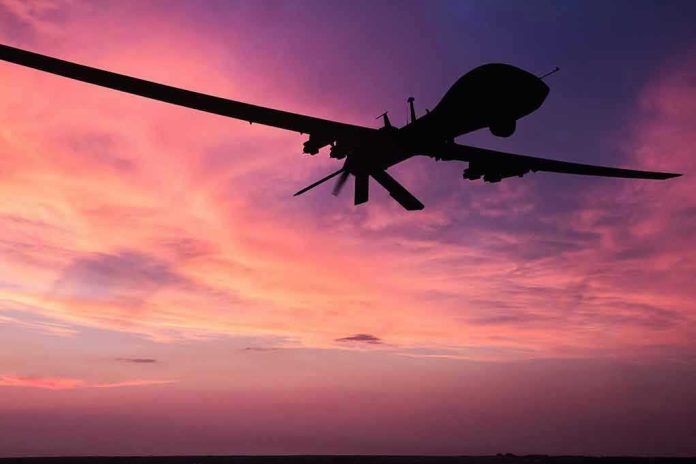
As tensions simmer in the Asia-Pacific, the U.S. military gears up to deploy its formidable MQ-9A Reaper drones in South Korea, raising eyebrows and questions about the future of regional security.
At a Glance
- The U.S. plans to deploy MQ-9A Reaper drones to South Korea on a rotational basis.
- The move aims to counter rising threats from North Korea and China.
- This deployment marks a shift from ground-attack to surveillance and precision strike capabilities.
- Regional tensions could escalate as North Korea and China view this as a provocative action.
U.S. Military to Strengthen Surveillance in Asia
The U.S. military is preparing to deploy MQ-9A Reaper drones to Gunsan Air Base in South Korea, set to begin in the second half of 2025. This deployment, a first for the Reaper in an operational rotational capacity in South Korea, underscores the U.S. commitment to strengthening its surveillance and deterrence capabilities in the region. The MQ-9A Reaper, renowned for its intelligence, surveillance, and reconnaissance (ISR) capabilities, is expected to enhance monitoring of North Korean military activities and Chinese operations in the Yellow Sea.
The Seventh Air Force, which commands U.S. air operations in South Korea, has emphasized the importance of maintaining readiness and alliance strength. However, specific operational details remain under wraps due to policy restrictions. South Korean military sources have confirmed the deployment plans, which align with broader U.S. military strategies to counteract evolving threats from North Korea and China.
Strategic Shifts and Regional Implications
This deployment signals a strategic shift from the U.S.’s traditional ground-attack focus to ISR and precision-strike capabilities. With the planned withdrawal of A-10 attack aircraft from South Korea by September 2025, the arrival of the Reaper drones marks a pivotal change in military posture, reflecting new security priorities in the face of increasing North Korean and Chinese military activities.
The introduction of the Reaper drones could potentially heighten tensions in the region. North Korea and China, known for their aggressive postures, may view this move as an escalatory action, prompting them to bolster their own military capabilities. The deployment comes on the heels of North Korea’s missile tests and nuclear developments, as well as China’s assertive maritime activities in the Yellow Sea, which have increased regional tensions over recent years.
Impact on Local and Regional Stability
The deployment of MQ-9A Reaper drones is poised to impact both local communities and regional stability. Increased military activity at Gunsan Air Base might affect surrounding communities, leading to concerns over noise, security, and potential economic disruptions. However, it could also provide an economic boost due to the increased U.S. presence.
On a broader scale, this move reinforces the U.S.-South Korea alliance, enhancing interoperability between forces and signaling a strong U.S. commitment to its regional partners. Yet, it also risks triggering an arms race, with North Korea and China potentially developing similar drone technologies in response. The strategic adaptation to prioritize ISR over traditional ground-attack roles is seen as necessary to maintain deterrence and stability in a volatile region.



